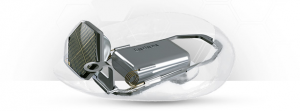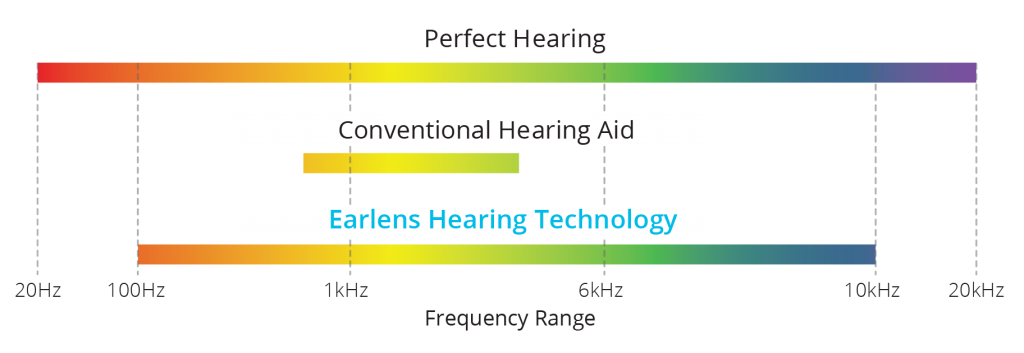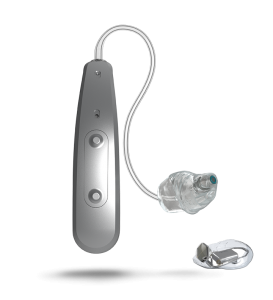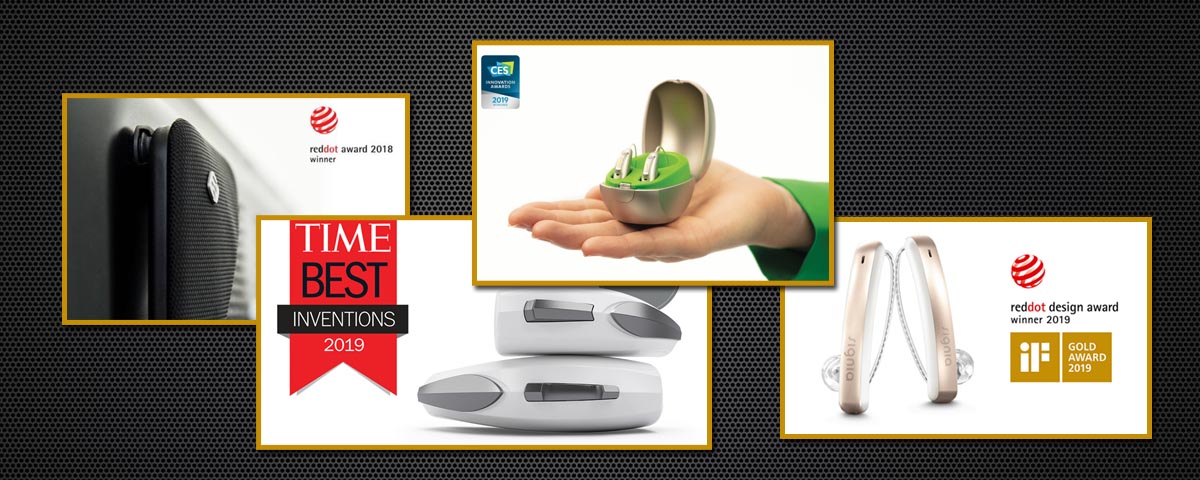Sounds can be described by their “pitch” or sound frequency, which is measured in hertz (Hz}. Some sounds, like a foghorn, are low frequency. Other sounds, like birds chirping, are high frequency. Different frequencies contain different information to help you understand, focus on and locate sound. Sensorineural hearing loss typically affects high frequency sounds first.
As hearing deteriorates in certain frequency ranges, you begin missing information. If you have high frequency hearing loss, you may notice that it is harder to hear in noisy environments like restaurants. High frequencies have been shown to increase the naturalness of sound. They also contain important speech information that helps your brain focus on what you want to hear. If you have low frequency hearing loss, you may notice that some sounds are no longer as full or as rich as you remember.
Earlens

The Earlens won the 2018 Edison Award for ‘Best New Product’. The company’s history of innovation was recognized with the top award in the Hearing Enhancement category.
“At Earlens, our employees are dedicated to our mission to deliver hearing-impaired patients unparalleled sound quality and speech understanding,” said Bill Facteau, President and CEO of Earlens Corporation. “On behalf of all of the employees at Earlens, we are thrilled to be recognized for our unique contribution to the advancement of hearing technology and look forward to continuing to raise the bar.”
Although it’s not yet available in Canada, the Earlens poses as an alternative for individuals with sensorineural hearing loss. The processor that sits on the clients ear similar to any RIC or BTE style hearing aid, collects auditory information and sends the signal to the eartip which then sends impulse energy to the lens which then lightly vibrates the eardrum activating the natural hearing system.
How does the Earlens differ from hearing aids?
Traditional hearing aids capture sound, process it digitally, which then pushes amplified sound through the speaker into our ear canal. The amplified sound reaches the eardrum and vibrates, which stimulates the middle ear and moves into the inner ear. Electrical signals are then sent to the brain which is where we perceive sound. Due to the limited frequency range, sound quality can begin to diminish at higher frequencies, which can lead to difficulties with perception of speech.
The earlens is a custom silicone mold of the eardrum. An ENT physician places the earlens in front of the eardrum where it will naturally conform to the shape of the clients eardrum. The behind the ear processor captures sound information and converts it into pulses of energy sent into the ear canal. This directly powers the Earlens, activating the natural hearing system. By directly vibrating the eardrum, and not relying on the high frequency limitations of speakers, Earlens is able to offer a greatly enhanced frequency range compared to traditional hearing aids.
Product Details
The Earlens hearing system is a custom rechargeable product. The ear tip and lens fit the ear perfectly with the use of custom silicone molds. The ear tip and processor automatically adjusts to challenging listening environments. Another great feature of the Earlens is the feedback reduction technology minimizes whistling. The wireless charger makes powering up your processor simply and convenient. With a 4 hour charge time and 24 hour wear time, the Earlens offers all day hearing. In addition, the Earlens Control App allows the user to take calls, and stream music effortlessly with the use of an Apple device. Furthermore, the Earlens app also allows the user to discreetly adjust the volume and program settings.
Steps Involved in Getting an Earlens
Your audiologist will determine whether you are a good candidate for Earlens based on your hearing and your ear canal shape. Impressions of the ear canal and eardrum are then taken and sent to the lab. Once the custom lens and tip returns to the clinic, the lens must be inserted by an ENT physician. Afterwards, your Audiologist will be able to program and set up your Earlens to your hearing needs.
When will it be available in Canada?
At the moment, Earlens is not available in Canada. In 2017, Western University’s National Centre for Audiology tested the Earlens in their clinical environment on a select group of candidates. However, there is no prediction on when the Earlens will be made available for the Canadian market. More information on this product is available at www.earlens.com.
*Images courtesy of Earlens









